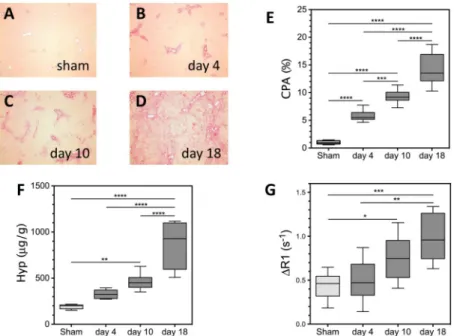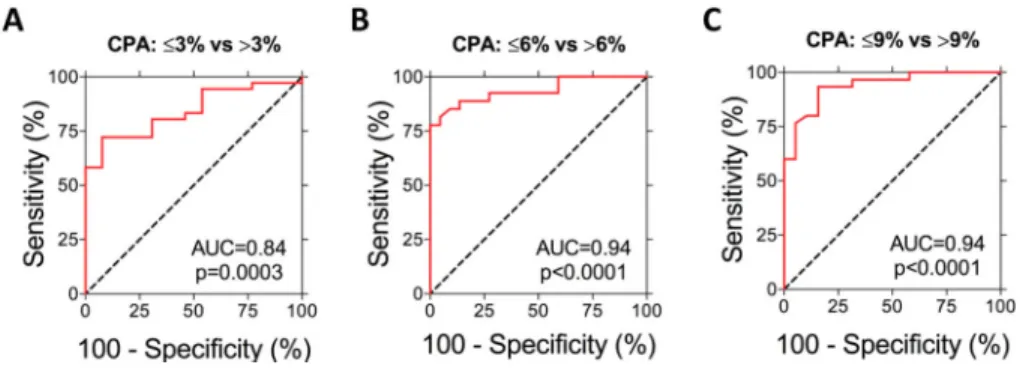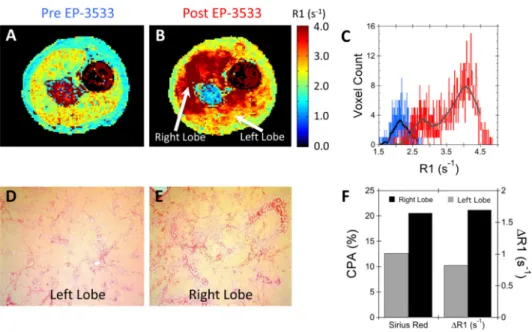3D molecular MR imaging of liver fibrosis and response to rapamycin therapy in a bile duct ligation rat model
Texte intégral
Figure




Documents relatifs
Every time the laser beam probes a diseased area, the retardance value is superior to the baseline (Fig. The probability distribution of retardance is assessed for the
Considering that (i) 2D HepaRG cells have failed to detect some progenotoxic compounds, (ii) 3D HepaRG spheroids have shown metabolic activities and functional characteristics that
scales and the distance to the threshold. The derivation of amplitude equations at orders higher than 83/2 starting with the Boussinesq equations is very painful and it
Avant de sortir, vérifiez la cote air santé (CAS) dans votre secteur, si elle est disponible – les enfants sont plus sensibles à la pollution atmosphérique, qui a
In vitro, Cxcl9 displayed strong antiproliferative and antimigra- tory effects on VEGF-stimulated endothelial cells and stellate cells by way of reduced VEGFR2 (KDR), phospholipase C
To confirm the clinical interest of the simplified ELF score, we evaluated its diagnostic accuracy for the prediction of significant fibrosis, severe fibrosis and cirrhosis in
model by Hamm and Bidaux [1996], our model takes into account the anomalous diffusion in the first porosity domain, adding generalized block shape along with fractal diffusion in
Table S14: Patients correctly classified (%) for severe fibrosis by the classification metric according to diagnostic tests as a function of test concordance between FibroMeter V2G


